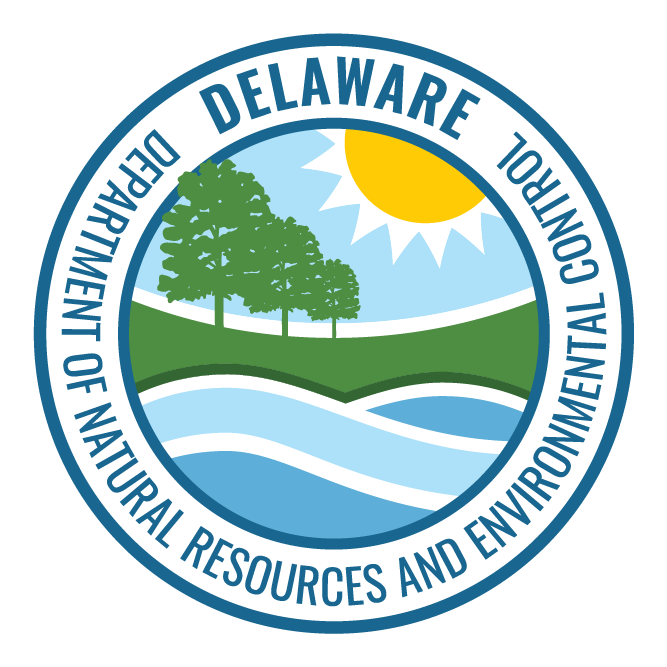Pages Categorized With: "Fish and Wildlife"
Fly Fishing Lessons
Anglers aged 16 and older can learn about, and gain skills in, the increasingly popular sport of fly-fishing by attending free fly-fishing lessons for adults at the DNREC Aquatic Resources Education Center in Smyrna. The 2024 fly-fishing class is set for Sept. 21 and 28, 2024, from 9Wild Turkey Surveys
Since 2010, the DNREC Division of Fish and Wildlife has used an annual, volunteer-based survey to record observations of wild turkeys across the state during the months of July and August. The survey generates an index of annual turkey productivity and recruitment (the ratio of young birds to adult females). The surveyAquatic Resources Education Center
The Aquatic Resources Education Center, operated by the DNREC Division of Fish and Wildlife, focuses on wetlands, fishing and other aquatic education themes.Contact Us
Mary Rivera Aquatic Resources Education Center 2520 Lighthouse Road Smyrna, DE 19977 302-735-8666
Youth Fishing Programs
The DNREC Division of Fish and Wildlife offers free fishing lessons, aquatic adventures and explorations of the Delaware Bay for children and young teens. Once they are hooked on fishing, they can try one of Delaware’s kid-friendly fishing ponds for a great day at the water’s edge. KidsTrapping and Furbearers
Technically, furbearers include all mammals that “bear fur.” However, furbearers have traditionally been classified as mammals that are trapped or hunted primarily for their economic value – their fur. Like many other species, furbearers must be managed in a sustainable and ecologically sound manner to ensure healthy populations throughout Delaware. [column md=”5″Delaware Boat Registration Agents
There are authorized boat registration sales outlets throughout Delaware. Most offer both boat registration and boat ramp certificates. A few only offer boat ramp certificates. New Castle County J&J Power Sports(Boat registration and ramp certificates)301 Commercial DriveWilmington, DE 19805Phone: 302-655-4957Delaware Wildlife Action Plan
After over eight years of implementing the 2015 Delaware Wildlife Action Plan, the DNREC Division of Fish and Wildlife has begun a comprehensive review and revision of the Plan to ensure the document remains up to date with the best available science and continues to serve the needs of Delaware’s wildlife. TheDivision of Fish and Wildlife
The DNREC Division of Fish and Wildlife conserves and manages Delaware’s fish and wildlife and their habitats, and provides fishing, hunting, wildlife viewing and boating access on approximately 68,000 acres of public land. The division oversees wildlife resource conservation and control of mosquito populations and offers hunter, boating and aquatic education programs. It provides licensesAmerican Oystercatchers
American oystercatchers are black and white shorebirds with bright orange beaks that feed and nest on the beach. The Beach-Nesting Bird Program monitors the population and productivity of American oystercatchers in Delaware. An American oystercatcher incubating a nest. (Photo: Henrietta Bellman) These birds begin arriving in Delaware in March, startLeast Terns
Least terns are the smallest species of tern in North America, with an orange-yellow beak and mask-like black markings on the head. The Beach-Nesting Bird Program monitors the population and productivity of least terns in Delaware. A male and female least tern conducting a courtship ritual. The male presents the female withBeach-Nesting Birds
Dwindling shorebird populations have landed several species on Delaware’s Endangered Species List. The DNREC Beach-Nesting Bird Program monitors the endangered breeding shorebirds, provides habitat protection, and provides information to the public about beach-nesting species. The Beach-Nesting Bird Program primarily focuses on three species — Piping Plovers, American Oystercatchers and LeastEducational Programs for Grades K Through 12
The DNREC Division of Fish and Wildlife operates two educational centers that provide free programs and resources to schools and other educational groups. The Aquatic Resources Education Center (AREC) and DuPont Nature Center (DNC) offer a variety of programming focused on aquatic species and other environmental education topics, from microorganisms found inBands and Special Markers on Migratory Gamebirds
Delaware hunters may find GPS transmitters, bands or other human-created additions on migratory gamebirds they encounter during hunting seasons. Harvesting such gamebirds is legal, but hunters should report what they find to state and federal biologists. Migratory gamebird hunters should be aware of specially marked ducks, geese andPublic Comment Opportunity: Aquatic Invasive Species Management Plan
The Department of Natural Resources and Environmental Control invites public comment on a proposed Aquatic Invasive Species Management Plan for Delaware. The department will take comments on the proposed plan through Nov. 15, 2023. Public Comment Draft: Aquatic Invasive Species Management Plan
Mosquito Control
DNREC’s Mosquito Control Section provides mosquito control services throughout Delaware to maintain quality of life and protect public health by reducing the possibility of mosquito-borne illnesses. For help with nuisance mosquitoes where you live, call one of our field offices: The Northern Delaware Office, 302-836-2555, serving New Castle CountyComment Form: Wildlife Area Land Replacement
The DNREC Division of Fish and Wildlife is asking for public comment on an Environmental Assessment of a proposal to replace a 23-acre portion of the Honig parcel in the Little Creek Wildlife Area with a 30-acre portion of the Vines parcel at Eagles Nest Wildlife Area to meet the purposes of a federal grant used toHunter Harvest Survey
This page holds the annual Hunter Harvest Survey from the DNREC Division of Fish and Wildlife. The survey helps state biologists track hunter harvest and activity for game species in Delaware.Contact Us
DNREC Hunter Surveys 302-735-3600
Artificial Reef Guide Requests
DNREC publishes the Delaware Reef Guide to provide information about the state’s artificial reef sites. The Guide is available for download in PDF format. A limited number of printed copies are available as well. Use the request form below to request a copy by mail. Please include yourBald Eagle Nesting Survey
The DNREC Division of Fish and Wildlife plans an aerial survey of bald eagle nesting sites during the late winter of 2023. You can help biologists plan for this survey by reporting bald eagle nests to the state. Report a Bald Eagle NestWildlife Viewing in Delaware’s State Wildlife Areas
The Delaware Department of Natural Resources and Environmental Control (DNREC) provides numerous outdoor recreation opportunities on public lands, including elevated wildlife-viewing structures on several state wildlife areas managed by the DNREC Division of Fish and Wildlife. Wildlife Area Maps [button type=”primary” block=”true”Fish and Wildlife Natural Resources Police Recruitment
This page includes information and requirements for applicants for positions with the Fish and Wildlife unit of the DNREC Natural Resources Police. Eligibility Requirements The applicant must: Be at least 20 and a half years oldCompleted of an academy approved by the Delaware Council on PoliceDelaware Whitetail Deer Records
The DNREC Division of Fish and Wildlife maintains records of the top hunter-taken whitetail deer in Delaware, using the Boone and Crockett scoring system. The records include whitetails taken in any year. State Deer Rankings All-Time Typical Whitetail Deer Non-TypicalDeer Stands or Ground Blinds on State Wildlife Areas
The DNREC Division of Fish and Wildlife requires hunters to register temporary deer stands or ground blinds they place on state wildlife areas.Contact Us
DNREC Wildlife Section 302-739-9912
2021 AREC Photo Contest Gallery
This page contains photographs submitted for the first annual Aquatic Resources Education Center (AREC) nature photography contest in 2021, including the winning submissions. The contest was open to photographers of all ages. Prizes were awarded in three categories (birds, nature, and people enjoying nature) and in three age groups (children, teens and adults). AllDelaware Hunters Against Hunger
Delaware’s deer hunters share part of their harvest each year with Delawareans in need. They provide thousands of pounds of venison through the Delaware Hunters Against Hunger program. Delivering boxes of venison to a food distribution hub. All donated deer are processed into ground venison, free of charge. TheWildlife Mortality Survey
If you see sick wildlife, or dead wildlife where it looks like the cause of death is an illness, please report it to the DNREC Division of Fish and Wildlife. If you see five or more sick or dead wild animals at the same location, please also call division staff at 302-735-3600Reporting Sick or Dead Wildlife
Wildlife disease surveillance, prevention, and control are crucial factors for safeguarding Delaware’s citizens, wildlife, pets, and livestock. Citizen reports help state biologists monitor wildlife populations in Delaware. If you seeReporting Tick Interactions
Knowing what species of tick has attached to you, a family member, or a pet will help determine whether you may be at risk for a tick-borne disease. Note: The state of Delaware does not provide tick pathogen testing services.
Reporting Fish Kills
A fish kill is a sudden, unexpected die-off of fish in a specific location. It is important to report fish kills right away. Evidence dissipates quickly; delays can make it harder to determine the cause. Signs of a Fish Kill: DeadVolunteer With the Piping Plover Program
To ensure continued breeding success, the DNREC Piping Plover Program depends on volunteers to help inform the public about the breeding progress of the plovers and the importance of staying out of closed areas.Contact Us
Shorebird Project Staff 302-735-3600
Volunteer With the Delaware Kestrel Partnership
The kestrel monitoring program relies on community scientist volunteers who dedicate time from March through July each year to help monitor kestrel boxes across the state. This page provides information on the volunteer program and a form to register to join the effort. [panel type=”success” heading=”ContactAmerican Kestrel Monitoring and Management
American kestrel populations in Delaware have declined. Once commonly seen perched along telephone wires and fence posts, this falcon is now a rare sight across our state. The DNREC Division of Fish and Wildlife works to study and manage the state’s population of American kestrels. [panelCOVID Relief Funding for Saltwater Fishery-Related Businesses
Delaware has received nearly $3 million in relief funding from the federal government to distribute to eligible saltwater fishery-related businesses affected by the coronavirus (COVID-19) pandemic. Applications for relief funds were accepted through March 17, 2022.Contact Us
Youth Waterfowl Hunting Day
Two separate, one-day, special youth waterfowl hunting days are open on Sunday, Oct. 20, 2024, and Saturday Feb. 1, 2025, for hunters ages 10 through 15.Shorebird Volunteer Form
This page is a volunteer registration form for those interested in volunteering to help with the spring field season of the Delaware Shorebird Project. Participants must be at least 18 years of age to volunteer with the Shorebird Project. Commitment Volunteers should plan on committing toOperation Game Theft Report Form
Use this form to report wildlife crime through DNREC’s Operation Game Theft. Information supplied in this form is strictly confidential and will not be released to the public. Use this form to report a crime that is not in progress. If you need to report a wildlife crime in progress,Migratory Bird Hunting
The DNREC Division of Fish and Wildlife provides opportunities for migratory bird hunting on state wildlife areas. The following is a summary of those opportunities and the procedures and rules that apply. (Updated Aug. 21, 2023) Hunting Seasons [button type=”primary”Ticks and Domestic Animals and Wildlife
It’s not just humans who can be affected by ticks. Tick-caused diseases and related problems also affect many wildlife species and domestic animals. Dogs Dogs are susceptible to both Lyme disease andReport Atlantic Sturgeon
You can help DNREC research and manage the local population of Atlantic sturgeon, a rare and endangered fish. Simply use our reporting form to let us know of any interactions you have with this fish. Submit a ReportProtecting Yourself from Ticks
Ticks live in several different habitat types and can be found throughout Delaware in forests, meadows and wetlands. They are also found in yards and residential areas. Ticks are active year-round if temperatures are above freezing.Tick Management
There are a few simple measures you can take to help keep you safe from ticks around the home. In the Yard Remove leaf litter and invasive plants. This helps to eliminateTicks of Delaware
There are five species of tick commonly found in Delaware. Identifying which tick has bitten you can help you take steps to protect yourself. There are also a handful of arthropods that are sometimes mistaken for ticks.Tick Program
DNREC’s tick program conducts year-round, statewide active and passive surveillance for ticks and tick-borne pathogens. Knowing when and where different tick species occur in the state, and whether or not they’re infected with pathogens such as the agent of Lyme disease, helps protect public health. [panel type=”success”Tick-Associated Diseases in Delaware
While Lyme disease is the most common tick-borne infection in Delaware, there are other tick-associated diseases to be aware of in case you suffer a tick bite. Note: The state of Delaware does not provide tick pathogen testing services.




